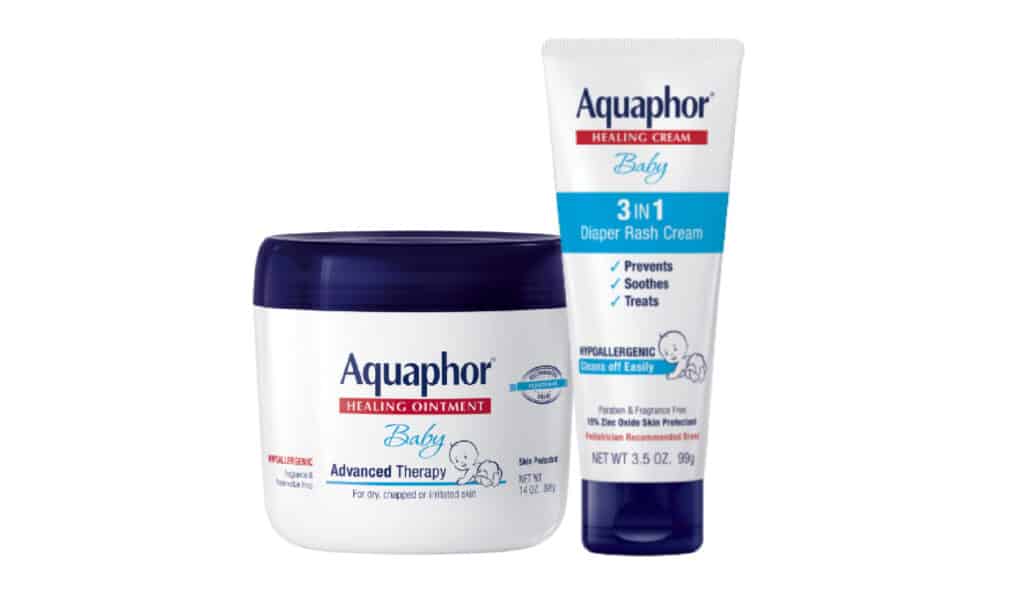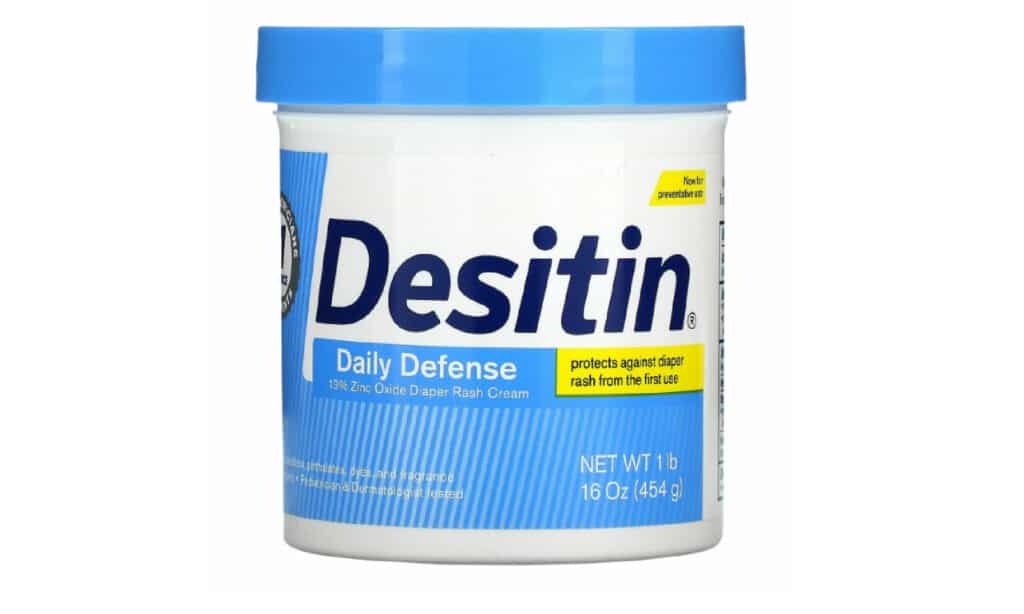As pet owners, we often find ourselves reaching for household items to treat our furry friends’ minor health issues. One such item that may come to mind is diaper rash cream. But, is it safe to use on dogs? Can it cause harm if ingested? In this blog, we’ll explore the ingredients in diaper rash cream, common brand names, and the potential risks of using it on dogs. We’ll also discuss zinc oxide topical poisoning, its symptoms, diagnosis, treatment, and recovery. So, if you’re considering using diaper rash cream on your dog or suspect they may have ingested it, read on to learn more about this topic.

Ingredients in Diaper Rash Cream
Diaper rash cream is typically made up of several active ingredients that are designed to soothe and protect irritated skin. Some of the most common active ingredients found in diaper rash cream include:
- Zinc oxide: Commonly used mineral to protect skin by forming surface barrier. Zinc oxide can also have antibacterial and anti-inflammatory properties.
- Petrolatum: A semi-solid mixture of hydrocarbons that is often used as an emollient to soften and moisturize the skin.
- Lanolin: A waxy substance derived from sheep’s wool that is used as a skin conditioner.
- Dimethicone: A silicone-based polymer that is used as a skin protectant and to provide a barrier against moisture.
While these ingredients are generally safe for use on human skin, they can potentially cause harm to dogs if ingested or applied in large quantities. In particular, zinc oxide can be toxic to dogs in certain circumstances, as we’ll discuss further in the next section.
Common Brand Names/Product Names
There’s a wide variety of diaper rash creams available on the market, each with their own blend of active ingredients. Some of the most common active ingredients found in these creams include zinc oxide, petrolatum, mineral oil, lanolin, and beeswax, just to name a few. Some of the most well-known brands and their ingredients are listed below:
- Desitin: 40% zinc oxide, petrolatum and cod liver oil.
- Boudreaux’s Butt Paste: 16% zinc oxide, petrolatum, mineral oil, and beeswax.
- Aquaphor Baby Healing Ointment: petrolatum, mineral oil, ceresin, and lanolin.
- A+D Original Ointment: lanolin and petrolatum.
- Triple Paste: 12.8% zinc oxide, petrolatum, corn starch, beeswax, and oat kernel extract.
It’s worth noting that the brands we mentioned are just a few examples of the many diaper rash creams available in stores today. Read the label carefully before using creams on your dog to ensure it’s safe for them. Check ingredients before using pet products as brands can vary in active ingredient proportions and components.

What is Zinc Oxide Topical Poisoning?
Zinc oxide topical poisoning refers to a toxic reaction that can occur when dogs ingest or have prolonged exposure to high levels of zinc oxide. Zinc oxide in creams is safe for humans but can be toxic to dogs in some situations.
When dogs ingest or are exposed to high levels of zinc oxide, it can cause a variety of symptoms and potentially lead to serious health complications. Some of the most common symptoms of zinc oxide topical poisoning in dogs include vomiting, diarrhea, lethargy, loss of appetite, abdominal pain, and seizures. In severe cases, zinc oxide poisoning can also cause liver and kidney damage, which can be life-threatening.
Get urgent vet care if you suspect your dog ate or was exposed to high levels of zinc oxide. Your veterinarian can perform tests to confirm a diagnosis of zinc oxide poisoning and recommend an appropriate course of treatment. With prompt and proper treatment, most dogs can make a full recovery from zinc oxide topical poisoning.
Symptoms of Zinc Oxide Topical Poisoning in Dogs
The symptoms of zinc oxide topical poisoning in dogs can vary depending on the severity of the exposure and the amount of zinc oxide that has been ingested or absorbed through the skin. Here are some of the most common symptoms that pet owners should watch out for:
- Gastrointestinal symptoms: Vomiting and diarrhea are common symptoms of zinc oxide topical poisoning in dogs. The stool may be discolored or contain blood.
- Lethargy: Dogs with zinc oxide poisoning may appear weak, tired, and uninterested in activities they usually enjoy.
- Loss of appetite: A dog with zinc oxide poisoning may refuse to eat or drink.
- Abdominal pain: Dogs with zinc oxide poisoning may exhibit signs of abdominal discomfort such as pacing, panting, and whining.
- Neurological symptoms: In severe cases, zinc oxide poisoning can cause neurological symptoms such as seizures, tremors, and difficulty walking.
If you notice any of these symptoms in your dog after using a product that contains zinc oxide or suspect that your dog has ingested a significant amount of the substance, it’s crucial to seek veterinary care immediately. Early treatment can help prevent serious complications and increase the chances of a full recovery.

Diagnosis of Zinc Oxide Topical Poisoning in Dogs
To diagnose zinc oxide topical poisoning in dogs, a veterinarian will typically start by performing a physical exam and reviewing your pet’s medical history. They may also ask you questions about the timing and circumstances of your pet’s exposure to zinc oxide.
Diagnostic tests that can help confirm a diagnosis of zinc oxide poisoning may include blood tests to assess liver and kidney function. X-rays or ultrasound scans may be used to check for any gastrointestinal blockages or damage to internal organs.
It’s worth noting that the symptoms of zinc oxide poisoning can be similar to those of other types of poisoning or underlying health conditions. It’s important to be as detailed as possible when describing your pet’s symptoms and exposure history to your veterinarian. Your vet can diagnose zinc oxide poisoning and suggest the right treatment for your pet through proper examination and tests.
Treatment of Zinc Oxide Topical Poisoning in Dogs
The treatment for zinc oxide topical poisoning in dogs will depend on the severity of the symptoms and the extent of the exposure to the substance. In mild cases, your veterinarian may recommend simply monitoring your dog’s symptoms and providing supportive care. This can include fluids to prevent dehydration and a bland diet to help soothe the gastrointestinal tract.
In more severe cases, treatment may involve hospitalization and more intensive care. This may include intravenous fluids, medications to manage symptoms such as vomiting or seizures. In some cases, surgery to remove any gastrointestinal blockages or to address any damage to internal organs.
It’s important to seek veterinary care as soon as possible if you suspect that your dog has ingested or been exposed to high levels of zinc oxide. Early treatment can help prevent serious complications and increase the chances of a full recovery.
Prevention is key when it comes to zinc oxide poisoning in dogs. Be sure to keep any products that contain zinc oxide, such as diaper rash cream or sunscreen, out of your pet’s reach, and always read the labels carefully to ensure that they are safe for use on dogs.

Recovery of Zinc Oxide Topical Poisoning in Dogs
The recovery process for zinc oxide topical poisoning in dogs can vary depending on the severity of the exposure and the extent of any damage to internal organs or bodily systems. With prompt and appropriate treatment, most dogs can recover from zinc oxide poisoning.
During the recovery period, it’s important to closely monitor your dog’s symptoms and follow your veterinarian’s instructions for care. Give meds, fluids, special diet, keep pet comfy; all part of caring for them during illness or treatment.
Your veterinarian may also recommend follow-up appointments or additional tests to ensure that your dog’s recovery is progressing as expected. It’s important to attend these appointments and to keep your veterinarian updated on your pet’s condition.
In some cases, dogs may experience long-term health complications as a result of zinc oxide poisoning. For example, if there has been damage to the liver or kidneys, your pet may require ongoing monitoring and medical care.
Conclusion
In conclusion, while diaper rash cream can be a useful tool for treating minor skin irritations in dogs, it’s important to use caution and consult with a veterinarian before applying it to your pet. A dog can get sick if they eat or use too much of diaper rash cream due to harmful ingredients. Zinc oxide, a common ingredient in many diaper rash creams, can be toxic to dogs in certain circumstances, leading to symptoms such as vomiting, diarrhea, and seizures.
If you suspect that your dog has ingested or been exposed to high levels of zinc oxide, it’s important to seek veterinary care right away. With prompt and appropriate treatment, most dogs can recover from zinc oxide poisoning.
Prevention is always the best course of action when it comes to zinc oxide poisoning in dogs. Be sure to keep any products that contain zinc oxide out of your pet’s reach, and to seek veterinary care immediately if you suspect that your pet may have ingested or been exposed to the substance. By being proactive and taking steps to keep your pet safe, you can help ensure that they stay healthy and happy for years to come.
~Sheena
Zinc Oxide Topical Poisoning Questions and Advice from Veterinary Professionals
External link to – hollinger, hannah. (2016, July 4). Zinc Oxide Topical Poisoning in Dogs – Symptoms, Causes, Diagnosis, Treatment, Recovery, Management, Cost. Wagwalking.com; Wag! https://wagwalking.com/condition/zinc-oxide-topical-poisoning
